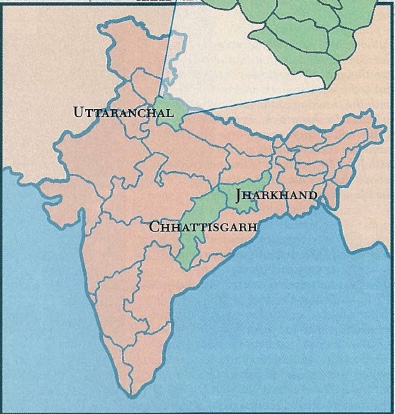A respected sociologist in New Delhi recently commented that “the last map of India has not yet been drawn.” He was right. There are now three new states in the land of Bharat. One of them–Uttaranchal, carved from the mountainous northwest corner of Uttar Pradesh–is famous for its ancient pilgrimage sites, which include Haridwar, Rishikesh, Badarinath, Gangotri, Yamunotri and Kedarnath. Created on November 11, 2000, Uttaranchal becomes India’s 27th state. Two other states–Chhattisgarh, cut from the southeast corner of Madhya Pradesh on November 1 and Jharkhand, sculpted from the southern half of Bihar on November 15–are the 26th and 28th states, respectively.
The apparent intention of the Hindu nationalist Bharatiya Janata Party (BJP) –the ruling party of India–and the great hope of many optimists is that this innovation represents a vital move towards the division of India into more manageable and democratic units than those inherited from the Raj. But in Uttaranchal, as the new chief minister of the region, Nityanand Swami, was being sworn in, protesters swarmed the podium and blows were exchanged. The cultural show planned to celebrate the new state’s birth had to be scrapped.
The hill-dwellers of Uttaranchal have long felt unhappy under the thumb of the Uttar Pradesh plainsmen. Despite rumors of shady politics and ulterior motives, the creation of their new state is being hailed as the fulfillment of a dream. Only the future can reveal the effect this division will have on the domain of some of India’s holiest pilgrimage sites.


